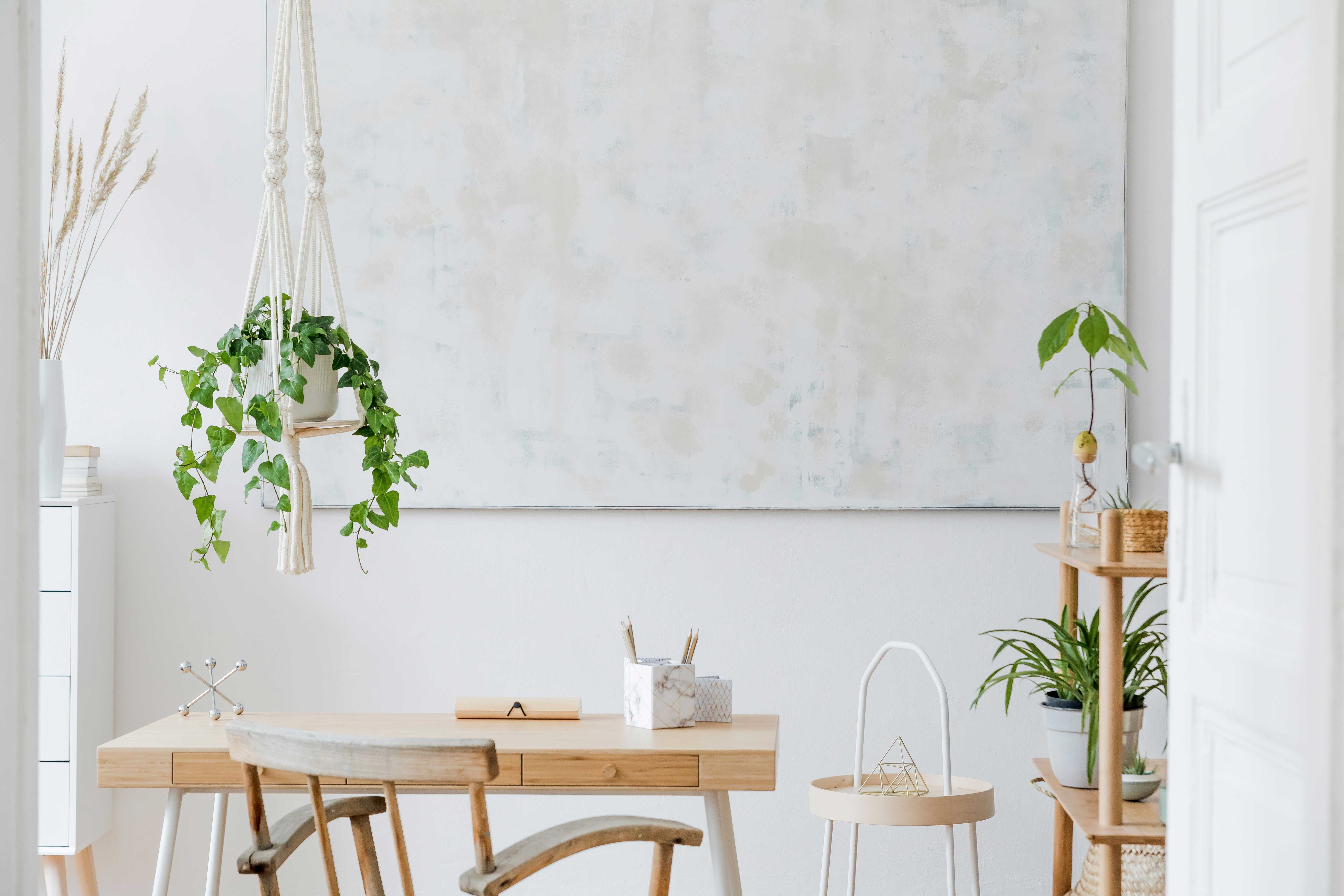
Turn Your Home into a Green Haven with Essential Houseplants
In today's fast-paced world, where
screens dominate our lives and the hustle and bustle of urban living can
sometimes feel overwhelming, there's a quiet but powerful antidote waiting just
out our doors. We call it nature. Imagine bringing a slice of the outdoors into
your living space—creating a sanctuary where the air is fresher, the colours
more vibrant, and the atmosphere more serene. This is the magic of houseplants
or indoor plants. Not only do they beautify your home, but they also offer a
myriad of health benefits, from purifying the air to reducing stress.
But with so many options available, where
do you start? How do you choose the right plants that will thrive indoors,
enhance your space, and require just the right amount of care for your
lifestyle? Whether you’re a seasoned plant parent or a beginner looking to
green up your space, this guide will introduce you to some of the best indoor
plants that can transform your home into a green oasis.
The Power of Plants: Why
You Should Bring Nature Indoors
Before diving into the best plants for
your home, it’s important to understand why indoor plants are more than just
decor. Numerous studies have shown that houseplants can:
- Improve Air Quality: Plants like the Snake Plant and Spider Plant are known for their
air-purifying qualities. They absorb toxins such as formaldehyde and
benzene, converting them into fresh oxygen.
- Reduce Stress: The presence
of greenery has been linked to lower stress levels and improved mental
well-being. Just looking at plants can help you feel more relaxed and
calm.
- Boost Productivity: Adding
a bit of green to your workspace can increase concentration and
productivity. Plants have been found to enhance cognitive function, making
them great companions for your home office.
- Enhance Aesthetic
Appeal: Beyond their health benefits, plants add
a natural, organic beauty to any space. They can soften the hard lines of
modern decor, introduce a pop of color, and create a more inviting
atmosphere.
Choosing the Right Plants
for Your Space
When selecting plants for your home, it’s
essential to consider factors such as light levels, humidity, and the amount of
care each plant requires. Let’s explore some of the best options across
different categories:
1. Low-Light Champions: Plants That Thrive in the
Shade
Not every home is blessed with abundant
natural light, but that doesn’t mean you can’t enjoy the benefits of indoor
plants. These low-light champions are perfect for dimly lit spaces:
●
Snake Plant (Sansevieria): Also known as the
“Mother-in-Law’s Tongue,” the Snake Plant is virtually indestructible. It
thrives in low light and requires minimal watering. Plus, it’s one of the best
plants for air purification.
●
ZZ Plant (Zamioculcas zamiifolia): The ZZ
Plant is another hardy option that can survive in low light and drought
conditions. Its glossy, waxy leaves add a modern touch to any room.
●
Pothos (Epipremnum aureum): With its trailing
vines and heart-shaped leaves, Pothos is both beautiful and easy to care for.
It can adapt to low light and is excellent for hanging baskets or shelves.
2. Sun-Lovers: Plants for Bright, Sunny Spots
If your home is flooded with natural
light, you’re in luck—many plants thrive in bright conditions. Here are a few
sun-loving options:
●
Fiddle Leaf Fig (Ficus lyrata): The Fiddle
Leaf Fig is a popular choice for its large, violin-shaped leaves. It needs
bright, indirect light and a bit more attention, but its striking appearance
makes it well worth the effort.
●
Succulents: Succulents come in an array of
shapes and sizes, making them a versatile choice for sunny windowsills. These
plants store water in their leaves, so they don’t need frequent watering.
Popular varieties include Echeveria, Aloe Vera, and Jade Plant.
●
Rubber Plant (Ficus elastica): With its thick,
shiny leaves, the Rubber Plant makes a bold statement. It enjoys bright light
but can tolerate some shade, making it a flexible choice for various spots in
your home.
3. Pet-Friendly Picks: Safe Plants for Households
with Animals
If you have pets, it’s crucial to choose
plants that are non-toxic to them. Luckily, there are plenty of pet-friendly
options:
●
Spider Plant (Chlorophytum comosum): The
Spider Plant is non-toxic to pets and incredibly easy to care for. Its arching
leaves and small white flowers make it a lovely addition to any room.
●
Areca Palm (Dypsis lutescens): This feathery
palm is not only safe for pets but also adds a tropical vibe to your home. It
prefers bright, indirect light and regular watering.
●
Boston Fern (Nephrolepis exaltata): Boston
Ferns are lush and graceful, with feathery fronds that are safe for pets. They
thrive in humid environments, making them ideal for bathrooms or kitchens.
4. Air-Purifying Plants: Breathe Easier Indoors
Indoor air pollution can be a concern,
especially in well-insulated homes. These plants are known for their
air-purifying abilities:
●
Peace Lily (Spathiphyllum): Peace Lilies are
not only beautiful with their dark green leaves and white flowers, but they’re
also excellent at removing toxins like ammonia and formaldehyde from the air.
●
English Ivy (Hedera helix): This classic plant
is great for reducing airborne mold. It’s a climber, so you can train it to
grow along a trellis or let it cascade from a hanging basket.
●
Aloe Vera: Besides being a natural remedy for
burns, Aloe Vera is also effective at purifying the air. It thrives in sunny
spots and requires minimal watering.
5. Low-Maintenance Marvels: Plants for Busy
Lifestyles
If you’re someone who loves the idea of
having plants but struggles with time or remembering to water them, these
low-maintenance plants are perfect for you:
●
Cacti: Cacti are the ultimate low-maintenance
plants. They require very little water and can thrive in bright, sunny spots.
With so many varieties to choose from, you can create a mini desert oasis in
your home.
●
Cast Iron Plant (Aspidistra elatior): True to
its name, the Cast Iron Plant is nearly indestructible. It can survive low
light, infrequent watering, and varying temperatures, making it ideal for those
who aren’t confident in their plant care skills.
●
Dracaena: Dracaenas are resilient and can
adapt to different light conditions, although they prefer bright, indirect
light. They’re also tolerant of irregular watering, making them a great choice
for beginners.
6. Top Indian Picks for Indoor Plants
In Indian households, certain plants have
stood the test of time, not just for their beauty but for their deep-rooted
significance in our daily lives. They carry cultural, spiritual, and even
medicinal importance, making them cherished additions to any home.
●
Tulsi (Ocimum tenuiflorum): No list of indoor
plants in an Indian context would be complete without mentioning Tulsi. Revered
for its medicinal and spiritual significance, Tulsi is a staple in many Indian
homes. It thrives in direct sunlight and is easy to care for. Beyond its health
benefits, Tulsi adds a sense of peace and positivity to any space.
●
Bamboo Palm (Chamaedorea seifrizii): The
Bamboo Palm is a compact, attractive plant that can fit into tight spaces while
still making a big impact. It’s another excellent air purifier and does well in
low to medium light conditions. The Bamboo Palm’s delicate fronds add a touch
of elegance to any room.
●
Money Plant (Epipremnum aureum): A common
sight in Indian households, the Money Plant is believed to bring prosperity and
good luck. It’s a hardy plant that can grow in both soil and water. Money
Plants are also known for their air-purifying qualities and can be trained to
grow on trellises or hang in baskets, adding a touch of greenery to any space.
Caring for Your Indoor
Plants: Tips and Tricks
Now that you’ve selected the perfect
plants, it’s essential to care for them properly to ensure they thrive. Here
are some general tips:
●
Light: Understanding the light requirements of
your plants is crucial. While some plants can tolerate low light, others need
bright, indirect light to flourish. Observe the lighting in different rooms of
your home and place your plants accordingly.
●
Watering: Overwatering is one of the most
common mistakes new plant owners make. It’s better to be underwater than
overwater. Always check the soil moisture before watering and ensure your pots
have drainage holes to prevent root rot.
●
Humidity: Many indoor plants, especially
tropical ones, prefer higher humidity levels. Consider misting your plants,
using a humidifier, or placing them in a bathroom where they can enjoy the
steam from your shower.
●
Feeding: During the growing season (spring and
summer), most plants benefit from regular feeding with a balanced,
water-soluble fertilizer. In the fall and winter, reduce feeding as most plants
go into a dormant phase.
●
Pest Control: Keep an eye out for common pests
like spider mites, aphids, and mealybugs. Regularly inspect your plants, and if
you spot any pests, treat them with insecticidal soap or neem oil.
Conclusion: Creating Your
Indoor Green Sanctuary
Bringing nature indoors is more than just
a trend—it’s a way to enhance your well-being, create a calming environment,
and connect with the natural world, even when you’re inside. Whether you’re
looking to add a few plants to your living room or create a lush indoor jungle,
the right selection of houseplants can transform your home into a green
sanctuary.
While bringing nature indoors can
significantly enhance your well-being, life isn't meant to be confined to four
walls. If you're someone who finds joy in gazing out at nature and being
surrounded by its beauty, Trident Hills Panchkula offers the perfect setting to
cultivate a life immersed in nature. In a world where many developers promise
abundant greenery, few truly deliver on that promise. However, Trident Hills,
just a 4-hour drive from the national capital, is a rare gem that lives up to
its word, providing an authentic connection to nature that you can truly
experience every day.
By choosing plants that match your space,
light levels, and lifestyle, you’ll not only beautify your surroundings but
also reap the numerous health benefits that indoor greenery provides. So go
ahead, pick up a plant (or two, or three), and start your journey towards a
more vibrant, nature-filled home.









